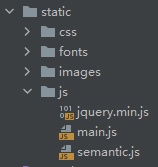- [Python] 使用 dataclass 简化数据结构:定义、功能与实战
踏雪无痕老爷子
Pythonpython开发语言
在经典面向对象编程中,为了保存和操作数据往往需要定义多个类,手写__init__()、__repr__()、__eq__()等方法。Python3.7引入了@dataclass装饰器,它能自动生成这些常见方法,大幅减少样板代码。本文将介绍dataclass的定义与参数、比较与普通类的差别、实战示例,以及常见注意事项。一、什么是dataclass@dataclass是一种类装饰器,它通过类成员的类型
- [Python]-基础篇1- 从零开始的Python入门指南
踏雪无痕老爷子
Pythonpython开发语言
无论你是尚未接触编程的新手,还是想从其他语言转向Python的开发者,这篇文章都是你的入门课。一、Python是什么?Python是一种解释型、高级、通用型编程语言,以简洁明了、简单易用着称。它可以应用于网站开发、自动化脚本、数据分析、人工智能、系统操作等多种场景。二、如何安装Python步骤:访问Python官方网站选择目前最新的Python3.x版本下载Windows用户请务必勾选“AddPy
- 算法竞赛备考冲刺必刷题(C++) | 洛谷 P8814 解密
热爱编程的通信人
算法c++开发语言
本文分享的必刷题目是从蓝桥云课、洛谷、AcWing等知名刷题平台精心挑选而来,并结合各平台提供的算法标签和难度等级进行了系统分类。题目涵盖了从基础到进阶的多种算法和数据结构,旨在为不同阶段的编程学习者提供一条清晰、平稳的学习提升路径。欢迎大家订阅我的专栏:算法题解:C++与Python实现!附上汇总贴:算法竞赛备考冲刺必刷题(C++)|汇总【题目来源】洛谷:P8814[CSP-J2022]解密-洛
- 程序化交易系统中如何精准获取MACD、KDJ、BOLL等基础指标的值?
股票程序化交易接口
量化交易股票API接口Python股票量化交易程序化交易系统macd指标kdj指标boll指标股票量化接口股票API接口
Python股票接口实现查询账户,提交订单,自动交易(1)Python股票程序交易接口查账,提交订单,自动交易(2)股票量化,Python炒股,CSDN交流社区>>>基础指标在程序化交易系统中的重要性基础指标对交易决策的指导意义MACD、KDJ、BOLL等基础指标在程序化交易系统中扮演着重要角色。MACD可以帮助判断市场的趋势和买卖信号,通过分析其快线和慢线的交叉情况,能为投资者提供入场和出场的参
- 股票程序化交易软件如何选择?这些要点你知道吗
股票程序化交易接口
量化交易股票API接口Python股票量化交易区块链股票程序化交易软件功能特性稳定性成本股票量化接口股票API接口
Python股票接口实现查询账户,提交订单,自动交易(1)Python股票程序交易接口查账,提交订单,自动交易(2)股票量化,Python炒股,CSDN交流社区>>>了解软件功能特性基础交易功能基础交易功能是股票程序化交易软件的核心。它应具备快速下单、撤单等基础操作能力。比如在行情快速变化时,能让投资者迅速抓住机会下单,或者及时撤单避免损失。软件的交易界面要简洁明了,方便投资者操作。还应支持多种交
- Python爬虫实战:全方位爬取知乎学习板块问答数据
Python爬虫项目
2025年爬虫实战项目python爬虫学习开发语言scrapy游戏
1.项目背景与爬取目标知乎是中国最大的知识问答社区,聚集了大量高质量的学习资源和经验分享。爬取知乎“学习”板块的问答数据,可以为学习资料整理、舆情分析、推荐系统开发等提供数据支持。本项目目标:爬取“学习”话题下的热门问答列表抓取每个问答的标题、作者、回答内容、点赞数、评论数等详细信息实现动态加载内容的抓取,包含图片和富文本避免被反爬机制限制,保证数据采集稳定结合数据分析,为后续应用打基础2.知乎“
- Python实战:自动在知乎回答点赞并采集内容的高阶爬虫教程
Python爬虫项目
2025年爬虫实战项目python爬虫开发语言okhttp学习
✨写在前面:为什么做知乎自动化操作?知乎作为中国领先的知识问答平台,拥有大量结构化内容。对于研究舆情分析、情绪识别、用户画像,甚至产品舆情反馈采集的用户来说,如何自动获取知乎内容并进行交互行为(如点赞、回答),是一个非常实用的能力。本文将手把手带你用Python完成以下目标:✅自动登录知乎✅自动搜索某个关键词下的热门问题✅自动点赞高质量回答✅自动采集回答内容(文本、点赞数、评论数等)✅自动保存为本
- Python爬虫实战:爬取知乎问答与用户信息
Python爬虫项目
python爬虫php数据分析开发语言开源
简介随着网络信息量的爆炸,如何有效获取有价值的内容,成为了数据分析、机器学习等领域的基础之一。爬虫作为数据采集的基本工具之一,常常被用来获取互联网上的公开数据。在这篇博客中,我们将结合最新的Python爬虫技术,详细讲解如何爬取知乎问答与用户信息。本文将会介绍:Python爬虫的基础知识知乎问答网页结构分析使用Python进行知乎数据爬取爬取知乎问答内容与用户信息如何处理和存储爬取的数据使用最新的
- python实战项目79:采集知乎话题下的所有回答
wp_tao
Python副业接单实战项目python开发语言
python实战项目79:采集知乎话题下的所有回答一、项目介绍二、代码使用方法三、drissionpage的优缺点四、完整代码五、注意事项一、项目介绍需求是采集知乎某话题下的所有回答,这里以话题“大学宿舍相处之间遇到莫名其妙的冷落怎么办呢?”为例,网页链接为https://www.zhihu.com/question/1898156781215146265,其中189815678121514626
- 使用 pip 命令下载 whl离线安装包、安装
三希
pip
使用pip命令直接从线上下载whl离线安装包并转存到离线环境的过程实际上是分两步进行的:第一步:在线环境下载whl包bash#在具有网络连接的环境中pipdownload--only-binary=:all:--wheel--platform--python-version这里的参数说明::需要下载的Python包名称。--only-binary=:all::只下载二进制包(即whl文件)。--w
- 【Python】 如何使用.whl文件安装Python包?
civilpy
python开发语言
基本原理在Python的世界中,.whl文件是一种分发格式,它代表“Wheel”。Wheel是一种Python包格式,旨在提供一种快速、可靠且兼容的方式,用于安装Python库。与源代码包相比,Wheel文件是预编译的,这意味着它们已经包含了编译后的扩展模块,这使得安装过程更快,更简单。代码示例以下是使用.whl文件安装Python包的示例步骤:示例1:基本安装假设你已经下载了一个名为exampl
- 如何安装 `.whl` 文件(Python Wheel 包)
喝醉酒的小白
LiunxPython模块python开发语言
目录标题如何安装`.whl`文件(PythonWheel包)安装前提安装方法(3种)方法1:直接使用pip安装(推荐)方法2:先进入文件目录再安装方法3:使用绝对路径(适合脚本中调用)⚠️常见问题解决问题1:版本不兼容错误问题2:缺少依赖问题3:权限不足验证安装进阶技巧如何安装.whl文件(PythonWheel包).whl文件是Python的二进制分发格式(Wheel格式),用于快速安装Pyth
- Python 数据挖掘实战: 关联规则与聚类分析,解锁数据价值的钥匙
清水白石008
pythonPython题库python数据挖掘动画
Python数据挖掘实战:关联规则与聚类分析,解锁数据价值的钥匙引言在数字化浪潮席卷全球的今天,数据已成为企业和组织最重要的战略资产。海量数据蕴藏着巨大的价值,等待我们去挖掘和发现。数据挖掘(DataMining),作为从海量数据中提取有价值知识和模式的关键技术,正日益受到各行各业的重视。它如同探矿者的火眼金睛,能够穿透数据的迷雾,发现隐藏在背后的规律和趋势,为商业决策、科学研究和社会发展提供强有
- PyWavelets
shangjg3
PyTorchpytorch人工智能python
PyWavelets(pywt)是Python中用于小波变换的核心库,提供了丰富的信号处理和图像处理功能。以下是其核心功能的详细介绍:1.小波变换基础(1)离散小波变换(DWT)将信号分解为近似系数(Approximation)和细节系数(Detail)。importpywtimportnumpyasnp#示例信号signal=np.array([1
- Anaconda插件开发
lyh1344
数据库开发
开发环境准备安装Anaconda或Miniconda,确保conda命令可用。推荐使用Python3.7及以上版本。创建独立的开发环境以避免依赖冲突:condacreate-nplugin_devpython=3.8condaactivateplugin_dev插件结构设计Anaconda插件通常采用Python包的标准结构。核心文件包括__init__.py和setup.py。典型目录结构如下:
- Python3 数字(Number)
froginwe11
开发语言
Python3数字(Number)引言在编程语言中,数字是构成程序的基础元素之一。Python3作为一种高级编程语言,提供了丰富的数字类型和操作方法。本文将详细介绍Python3中的数字类型,包括整数、浮点数、复数等,并探讨它们的特性和应用。整数(Integer)整数是Python3中最基本的数据类型之一,用于表示没有小数部分的数值。在Python3中,整数类型没有大小限制,可以表示任意大小的整数
- Python编程:使用Opencv进行图像处理
【参考】https://github.com/opencv/opencv/tree/4.x/samples/pythonPython使用OpenCV进行图像处理OpenCV(OpenSourceComputerVisionLibrary)是一个开源的计算机视觉和机器学习软件库。下面将从基础到高阶介绍如何使用Python中的OpenCV进行图像处理。一、安装首先需要安装OpenCV库:pipinst
- Web3前沿科技:开启数字资产交易新征程
AI天才研究院
AI大模型企业级应用开发实战AgenticAI实战AI人工智能与大数据web3科技ai
Web3前沿科技:开启数字资产交易新征程关键词:Web3、数字资产交易、区块链、智能合约、去中心化金融摘要:本文聚焦于Web3前沿科技在数字资产交易领域的应用与发展。详细阐述了Web3的核心概念、相关技术原理,包括区块链、智能合约等。通过具体的算法原理和Python代码示例,深入剖析了数字资产交易在Web3环境下的运行机制。同时,结合实际项目案例,讲解了开发环境搭建、代码实现与解读。探讨了Web3
- 区块链技术概述:从比特币到Web3.0
闲人编程
Python区块链50讲区块链web3python元宇宙比特币安全
目录区块链技术概述:从比特币到Web3.0引言:数字革命的下一篇章1.区块链技术基础1.1区块链定义与核心特征1.2区块链数据结构可视化2.比特币:区块链的开端2.1比特币的核心创新2.2比特币交易生命周期3.以太坊与智能合约革命3.1以太坊的核心创新3.2智能合约执行流程4.Web3.0:互联网的新范式4.1Web3.0的核心特征4.2Web3技术栈5.Python实现简易区块链系统5.1区块类
- 【Python常用模块】_Pandas模块3-DataFrame对象
失心疯_2023
Python常用模块数据分析pandas数据挖掘python数据统计数据处理
课程推荐我的个人主页:失心疯的个人主页入门教程推荐:Python零基础入门教程合集虚拟环境搭建:Python项目虚拟环境(超详细讲解)PyQt5系列教程:PythonGUI(PyQt5)教程合集Oracle数据库教程:Oracle数据库教程合集MySQL数据库教程:MySQL数据库教程合集优质资源下载:资源下载合集
- 《Python数据分析与挖掘实战》Chapter8中医证型关联规则挖掘笔记
茫茫大地真干净
机器学习Python数据挖掘
最近在学习《Python数据分析与挖掘实战》中的案例,写写自己的心得。代码分为两大部分:1.读取数据并进行聚类分析2.应用Apriori关联规则挖掘规律1.聚类部分函数分析:defprogrammer_1():datafile="C:/Users/longming/Desktop/chapter8/data/data.xls"processedfile="C:/Users/longming/Des
- 利用chatGPT提取复杂json数据到excel文件中
z日火
工具使用excelchatgptjson
利用chatGPT提取复杂json数据到excel文件中1利用swagger导出json类型的接口数据2使用hiJson工具查看json结构3利用ChatGPT写python代码解析数据4复制代码到vscode运行任务说明:整理一个项目的所有接口,保存到excel文档中。在这里插入图片描述1利用swagger导出json类型的接口数据2使用hiJson工具查看json结构我需要json数据的"pa
- 【Python深度学习】零基础掌握Pytorch Pooling layers nn.MaxPool方法
Mr数据杨
Python深度学习python深度学习pytorch
在深度学习的世界中,MaxPooling是一种关键的操作,用于降低数据的维度并保留重要特征。这就像是从一堆照片中挑选出最能代表某个场景的那张。PyTorch提供了多种MaxPooling层,包括nn.MaxPool1d、nn.MaxPool2d和nn.MaxPool3d,它们分别适用于不同维度的数据处理。如果处理的是声音信号(一维数据),就会用到nn.MaxPool1d。而处理图像(二维数据)时,
- 根包含文件——Luaconf.h (src)
LLLLLLLLLLLLLL265161
InsideLualuainteger编译器alignmentc++dll
Luaconf.h是配置的总集,定义了平台相关的设置,是所有文件都包含的,即RootlyIncluded。0.前言开始关注Lua也是06年六月的事情,《程序员》的2006年第六期中,我独独看中了Lua,而不是当时我已经比较熟悉的Python和Ruby,即使它们我都关注了好几年,但是都没有Lua给我的震撼大。于是那个夏天,稍微地尝试读了Lua的代码。开学后,我突然觉得自己有点受唆使,轻信了动态的福音
- Python3获取5000个元素的单字符表
DechinPhy
技术背景此前考虑过一个问题,有没有办法获取到python里面所有定义好的单字符的表,比如我们获取5000个不一样的单字符,但是常用的chr(number)的方法里面包含了太多的非字母条目,比如缩进换行符等,也会被识别为长度为1的符号。因此需要在此基础上加一个isalpha()的判断。输出5000个字符示例先解释一下思路,我们还是遍历chr中所包含的字符,此时得到的是所有的长度为1的字符,再用str
- 【安装Stable Diffusion以及遇到问题和总结】
岁月玲珑
AIstablediffusionAI编程AI作画
在本地安装部署StableDiffusion,需要准备好硬件环境,安装相关依赖,然后配置模型。下面为你详细介绍安装部署的步骤:一、硬件要求显卡:需要NVIDIAGPU,显存至少6GB,推荐8GB及以上。系统:Windows10/11、Linux(Ubuntu等)或macOS(需要Rosetta2)。内存:至少16GBRAM。存储空间:准备10GB以上的可用空间。二、软件准备首先要安装Python和
- 力扣网C语言编程题:接雨水(双指针法)
魏劭
逻辑编程题C语言c语言leetcode算法
一.简介前面文章是以动态规划方法实现的,文章如下:力扣网C语言编程题:接雨水(动态规划实现)-CSDN博客本文继续针对力扣网的接雨水问题,以另一种解题思路(双指针)以C语言实现和Python实现。二.力扣网C语言编程题:接雨水(双指针法)题目:接雨水给定n个非负整数表示每个宽度为1的柱子的高度图,计算按此排列的柱子,下雨之后能接多少雨水。示例2:输入:height=[4,2,0,3,2,5]输出:
- Python各版本发布时间和重要特性
mosquito_lover1
python
1.Python1.x:-Python1.0(1994年1月):第一个正式版本。-Python1.6(2000年9月):最后一个1.x版本。2.Python2.x:-Python2.0(2000年10月):引入了列表推导、垃圾回收等特性。-Python2.7(2010年7月):Python2.x系列的最后一个版本,长期支持至2020年1月1日。3.Python3.x:-Python3.0(2008
- python中用matplotlib画图解决中文问题!!!!!!!终于ok了
luckylbb
python爬虫
在网上用了很多方法基本一样最后终于解决了,分享一下,前面几步似曾相识,但是依旧我发解决问题,重点在最后一步,亲测有效!!!!1、首先在Windons\Fonts下面找到simhei的字体没有就去下载,其实就是黑体,将它拖到桌面备用2、importmatplotlibprint(matplotlib.matplotlib_fname())输入命令查找到自己下载的matplotlib配置文件的位置我的
- Python使用matplotlib绘制图像时,中文图例或标题无法正常显示问题
独不懂
Pythonpythonmatplotlib开发语言
Python使用matplotlib绘制图像时,中文图例或标题无法显示问题解决方法一、问题描述二、解决方法欢迎学习交流!邮箱:z…@1…6.com网站:https://zephyrhours.github.io/一、问题描述Matplotlib库是Python中经常使用的绘图工具,但是有时候我们在使用plt绘制图像,需要将英文标题或者图例显示为中文样式,总会出现无法显示的问题,具体情况如下:imp
- jQuery 键盘事件keydown ,keypress ,keyup介绍
107x
jsjquerykeydownkeypresskeyup
本文章总结了下些关于jQuery 键盘事件keydown ,keypress ,keyup介绍,有需要了解的朋友可参考。
一、首先需要知道的是: 1、keydown() keydown事件会在键盘按下时触发. 2、keyup() 代码如下 复制代码
$('input').keyup(funciton(){
- AngularJS中的Promise
bijian1013
JavaScriptAngularJSPromise
一.Promise
Promise是一个接口,它用来处理的对象具有这样的特点:在未来某一时刻(主要是异步调用)会从服务端返回或者被填充属性。其核心是,promise是一个带有then()函数的对象。
为了展示它的优点,下面来看一个例子,其中需要获取用户当前的配置文件:
var cu
- c++ 用数组实现栈类
CrazyMizzz
数据结构C++
#include<iostream>
#include<cassert>
using namespace std;
template<class T, int SIZE = 50>
class Stack{
private:
T list[SIZE];//数组存放栈的元素
int top;//栈顶位置
public:
Stack(
- java和c语言的雷同
麦田的设计者
java递归scaner
软件启动时的初始化代码,加载用户信息2015年5月27号
从头学java二
1、语言的三种基本结构:顺序、选择、循环。废话不多说,需要指出一下几点:
a、return语句的功能除了作为函数返回值以外,还起到结束本函数的功能,return后的语句
不会再继续执行。
b、for循环相比于whi
- LINUX环境并发服务器的三种实现模型
被触发
linux
服务器设计技术有很多,按使用的协议来分有TCP服务器和UDP服务器。按处理方式来分有循环服务器和并发服务器。
1 循环服务器与并发服务器模型
在网络程序里面,一般来说都是许多客户对应一个服务器,为了处理客户的请求,对服务端的程序就提出了特殊的要求。
目前最常用的服务器模型有:
·循环服务器:服务器在同一时刻只能响应一个客户端的请求
·并发服务器:服
- Oracle数据库查询指令
肆无忌惮_
oracle数据库
20140920
单表查询
-- 查询************************************************************************************************************
-- 使用scott用户登录
-- 查看emp表
desc emp
- ext右下角浮动窗口
知了ing
JavaScriptext
第一种
<!DOCTYPE html PUBLIC "-//W3C//DTD XHTML 1.0 Transitional//EN" "http://www.w3.org/TR/xhtml1/DTD/xhtml1-transitional.dtd">
<html xmlns="http://www.w3.org/1999/
- 浅谈REDIS数据库的键值设计
矮蛋蛋
redis
http://www.cnblogs.com/aidandan/
原文地址:http://www.hoterran.info/redis_kv_design
丰富的数据结构使得redis的设计非常的有趣。不像关系型数据库那样,DEV和DBA需要深度沟通,review每行sql语句,也不像memcached那样,不需要DBA的参与。redis的DBA需要熟悉数据结构,并能了解使用场景。
- maven编译可执行jar包
alleni123
maven
http://stackoverflow.com/questions/574594/how-can-i-create-an-executable-jar-with-dependencies-using-maven
<build>
<plugins>
<plugin>
<artifactId>maven-asse
- 人力资源在现代企业中的作用
百合不是茶
HR 企业管理
//人力资源在在企业中的作用人力资源为什么会存在,人力资源究竟是干什么的 人力资源管理是对管理模式一次大的创新,人力资源兴起的原因有以下点: 工业时代的国际化竞争,现代市场的风险管控等等。所以人力资源 在现代经济竞争中的优势明显的存在,人力资源在集团类公司中存在着 明显的优势(鸿海集团),有一次笔者亲自去体验过红海集团的招聘,只 知道人力资源是管理企业招聘的 当时我被招聘上了,当时给我们培训 的人
- Linux自启动设置详解
bijian1013
linux
linux有自己一套完整的启动体系,抓住了linux启动的脉络,linux的启动过程将不再神秘。
阅读之前建议先看一下附图。
本文中假设inittab中设置的init tree为:
/etc/rc.d/rc0.d
/etc/rc.d/rc1.d
/etc/rc.d/rc2.d
/etc/rc.d/rc3.d
/etc/rc.d/rc4.d
/etc/rc.d/rc5.d
/etc
- Spring Aop Schema实现
bijian1013
javaspringAOP
本例使用的是Spring2.5
1.Aop配置文件spring-aop.xml
<?xml version="1.0" encoding="UTF-8"?>
<beans
xmlns="http://www.springframework.org/schema/beans"
xmln
- 【Gson七】Gson预定义类型适配器
bit1129
gson
Gson提供了丰富的预定义类型适配器,在对象和JSON串之间进行序列化和反序列化时,指定对象和字符串之间的转换方式,
DateTypeAdapter
public final class DateTypeAdapter extends TypeAdapter<Date> {
public static final TypeAdapterFacto
- 【Spark八十八】Spark Streaming累加器操作(updateStateByKey)
bit1129
update
在实时计算的实际应用中,有时除了需要关心一个时间间隔内的数据,有时还可能会对整个实时计算的所有时间间隔内产生的相关数据进行统计。
比如: 对Nginx的access.log实时监控请求404时,有时除了需要统计某个时间间隔内出现的次数,有时还需要统计一整天出现了多少次404,也就是说404监控横跨多个时间间隔。
Spark Streaming的解决方案是累加器,工作原理是,定义
- linux系统下通过shell脚本快速找到哪个进程在写文件
ronin47
一个文件正在被进程写 我想查看这个进程 文件一直在增大 找不到谁在写 使用lsof也没找到
这个问题挺有普遍性的,解决方法应该很多,这里我给大家提个比较直观的方法。
linux下每个文件都会在某个块设备上存放,当然也都有相应的inode, 那么透过vfs.write我们就可以知道谁在不停的写入特定的设备上的inode。
幸运的是systemtap的安装包里带了inodewatch.stp,位
- java-两种方法求第一个最长的可重复子串
bylijinnan
java算法
import java.util.Arrays;
import java.util.Collections;
import java.util.List;
public class MaxPrefix {
public static void main(String[] args) {
String str="abbdabcdabcx";
- Netty源码学习-ServerBootstrap启动及事件处理过程
bylijinnan
javanetty
Netty是采用了Reactor模式的多线程版本,建议先看下面这篇文章了解一下Reactor模式:
http://bylijinnan.iteye.com/blog/1992325
Netty的启动及事件处理的流程,基本上是按照上面这篇文章来走的
文章里面提到的操作,每一步都能在Netty里面找到对应的代码
其中Reactor里面的Acceptor就对应Netty的ServerBo
- servelt filter listener 的生命周期
cngolon
filterlistenerservelt生命周期
1. servlet 当第一次请求一个servlet资源时,servlet容器创建这个servlet实例,并调用他的 init(ServletConfig config)做一些初始化的工作,然后调用它的service方法处理请求。当第二次请求这个servlet资源时,servlet容器就不在创建实例,而是直接调用它的service方法处理请求,也就是说
- jmpopups获取input元素值
ctrain
JavaScript
jmpopups 获取弹出层form表单
首先,我有一个div,里面包含了一个表单,默认是隐藏的,使用jmpopups时,会弹出这个隐藏的div,其实jmpopups是将我们的代码生成一份拷贝。
当我直接获取这个form表单中的文本框时,使用方法:$('#form input[name=test1]').val();这样是获取不到的。
我们必须到jmpopups生成的代码中去查找这个值,$(
- vi查找替换命令详解
daizj
linux正则表达式替换查找vim
一、查找
查找命令
/pattern<Enter> :向下查找pattern匹配字符串
?pattern<Enter>:向上查找pattern匹配字符串
使用了查找命令之后,使用如下两个键快速查找:
n:按照同一方向继续查找
N:按照反方向查找
字符串匹配
pattern是需要匹配的字符串,例如:
1: /abc<En
- 对网站中的js,css文件进行打包
dcj3sjt126com
PHP打包
一,为什么要用smarty进行打包
apache中也有给js,css这样的静态文件进行打包压缩的模块,但是本文所说的不是以这种方式进行的打包,而是和smarty结合的方式来把网站中的js,css文件进行打包。
为什么要进行打包呢,主要目的是为了合理的管理自己的代码 。现在有好多网站,你查看一下网站的源码的话,你会发现网站的头部有大量的JS文件和CSS文件,网站的尾部也有可能有大量的J
- php Yii: 出现undefined offset 或者 undefined index解决方案
dcj3sjt126com
undefined
在开发Yii 时,在程序中定义了如下方式:
if($this->menuoption[2] === 'test'),那么在运行程序时会报:undefined offset:2,这样的错误主要是由于php.ini 里的错误等级太高了,在windows下错误等级
- linux 文件格式(1) sed工具
eksliang
linuxlinux sed工具sed工具linux sed详解
转载请出自出处:
http://eksliang.iteye.com/blog/2106082
简介
sed 是一种在线编辑器,它一次处理一行内容。处理时,把当前处理的行存储在临时缓冲区中,称为“模式空间”(pattern space),接着用sed命令处理缓冲区中的内容,处理完成后,把缓冲区的内容送往屏幕。接着处理下一行,这样不断重复,直到文件末尾
- Android应用程序获取系统权限
gqdy365
android
引用
如何使Android应用程序获取系统权限
第一个方法简单点,不过需要在Android系统源码的环境下用make来编译:
1. 在应用程序的AndroidManifest.xml中的manifest节点
- HoverTree开发日志之验证码
hvt
.netC#asp.nethovertreewebform
HoverTree是一个ASP.NET的开源CMS,目前包含文章系统,图库和留言板功能。代码完全开放,文章内容页生成了静态的HTM页面,留言板提供留言审核功能,文章可以发布HTML源代码,图片上传同时生成高品质缩略图。推出之后得到许多网友的支持,再此表示感谢!留言板不断收到许多有益留言,但同时也有不少广告,因此决定在提交留言页面增加验证码功能。ASP.NET验证码在网上找,如果不是很多,就是特别多
- JSON API:用 JSON 构建 API 的标准指南中文版
justjavac
json
译文地址:https://github.com/justjavac/json-api-zh_CN
如果你和你的团队曾经争论过使用什么方式构建合理 JSON 响应格式, 那么 JSON API 就是你的 anti-bikeshedding 武器。
通过遵循共同的约定,可以提高开发效率,利用更普遍的工具,可以是你更加专注于开发重点:你的程序。
基于 JSON API 的客户端还能够充分利用缓存,
- 数据结构随记_2
lx.asymmetric
数据结构笔记
第三章 栈与队列
一.简答题
1. 在一个循环队列中,队首指针指向队首元素的 前一个 位置。
2.在具有n个单元的循环队列中,队满时共有 n-1 个元素。
3. 向栈中压入元素的操作是先 移动栈顶指针&n
- Linux下的监控工具dstat
网络接口
linux
1) 工具说明dstat是一个用来替换 vmstat,iostat netstat,nfsstat和ifstat这些命令的工具, 是一个全能系统信息统计工具. 与sysstat相比, dstat拥有一个彩色的界面, 在手动观察性能状况时, 数据比较显眼容易观察; 而且dstat支持即时刷新, 譬如输入dstat 3, 即每三秒收集一次, 但最新的数据都会每秒刷新显示. 和sysstat相同的是,
- C 语言初级入门--二维数组和指针
1140566087
二维数组c/c++指针
/*
二维数组的定义和二维数组元素的引用
二维数组的定义:
当数组中的每个元素带有两个下标时,称这样的数组为二维数组;
(逻辑上把数组看成一个具有行和列的表格或一个矩阵);
语法:
类型名 数组名[常量表达式1][常量表达式2]
二维数组的引用:
引用二维数组元素时必须带有两个下标,引用形式如下:
例如:
int a[3][4]; 引用:
- 10点睛Spring4.1-Application Event
wiselyman
application
10.1 Application Event
Spring使用Application Event给bean之间的消息通讯提供了手段
应按照如下部分实现bean之间的消息通讯
继承ApplicationEvent类实现自己的事件
实现继承ApplicationListener接口实现监听事件
使用ApplicationContext发布消息
